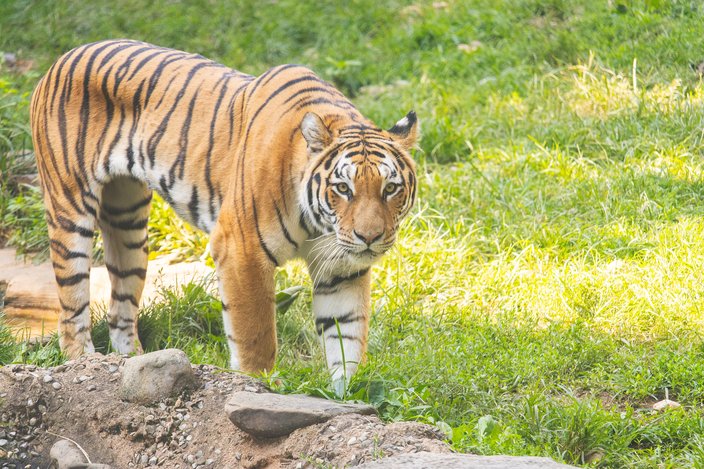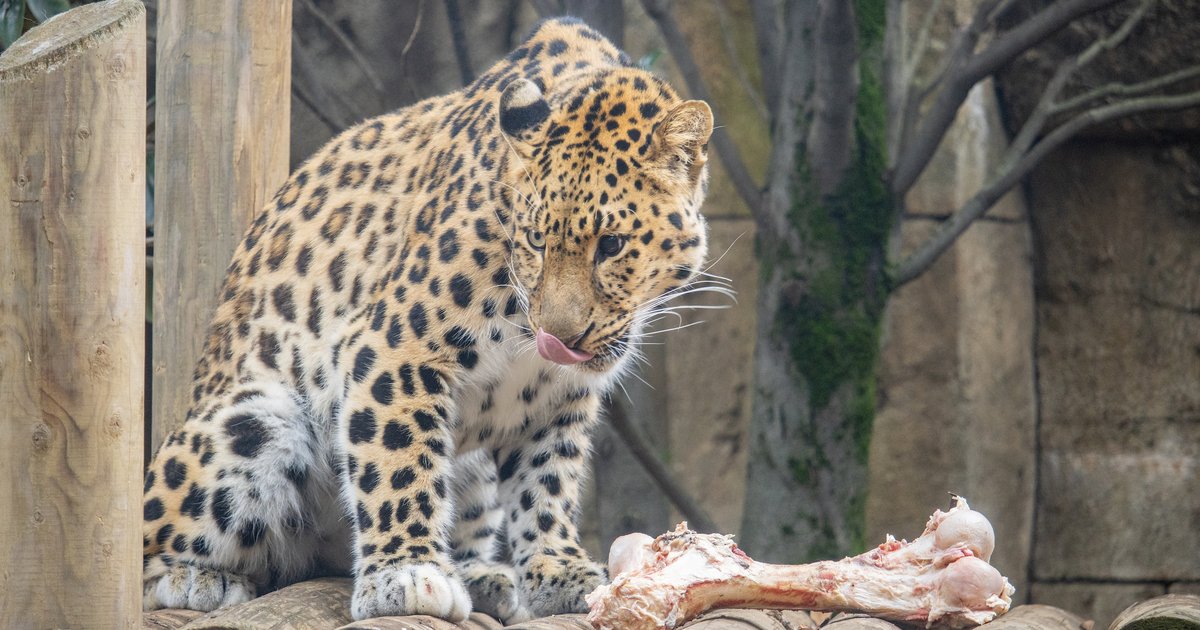Two new big cats are now on display at the Philadelphia Zoo as part of a breeding program that helps endangered species.
Rory, a 4-year-old female Amur tiger, and Rafferty, an 8-year-old male Amur leopard, joined the zoo’s Big Cat Falls habitat in the early summer. Both species are native to the Amur River Valley in Southern Russia and severely threatened by habitat loss and poachers, with only a few hundred left in the wild. They came to Philadelphia through recommendations from the Association of Zoos and Aquariums Species Survival Plan program.
MORE: Recycled oyster shells become climate warriors in Jersey Shore town’s coastal defense
Rafferty, who has two different colored eyes, was acquired as a mate for leopard Kira. He was born at the Hogle Zoo in Utah, but later moved to the Rosamond Gifford Zoo in Syracuse, New York, where he sired offspring in 2019.
Amur leopards are the zoo’s rarest and most critically endangered mammal. Less than 150 are believed to be left in the wild — all in the southern tip of Russia. Their coats change throughout the year, growing from about an inch thick in the summer to three inches in the winter. Their legs are also longer than other leopard species, which is thought to help them walk through deep snow.

Rory, above, is the newest Amur Tiger at the Philadelphia Zoo.
Rory was born at the Toledo Zoo and weighs almost 300 pounds. She was brought to Philadelphia as a potential mate for brothers Wiz and Dimitri. She has longer whiskers than any other tiger at the facility.
Amur tigers, also known as Siberian tigers, are found in Russia and Northern China. They are largest cat in the world, with males growing up to 11 feet long. They often hunt alone, but cubs rely on their mothers for food and will stay with them for as long as two years. Approximately 500 are estimated to be left in the wild. In the 1940s, their wild population was thought to be as low as 50, according to the Wildcats Conservation Alliance, but their numbers rekindled after hunting bans.
The Species Survival Plan helps build populations of threatened and endangered species across various zoos to protect them from extinction. Zoo staff said they’re keeping a close eye on both animals for signs that they’re ready to be introduced to their mates, and hope to see cubs in the coming years.
“Our big cat team has already fallen in love with both Rory and Rafferty,” Assistant Director of Carnivores Jackie Stone said in a statement. “Rory has very expressive ears and loves playing with the different enrichment items, from toys covered in scents to ice treats. Rafferty is a curious cat that enjoys interacting with his keepers during training sessions.”

